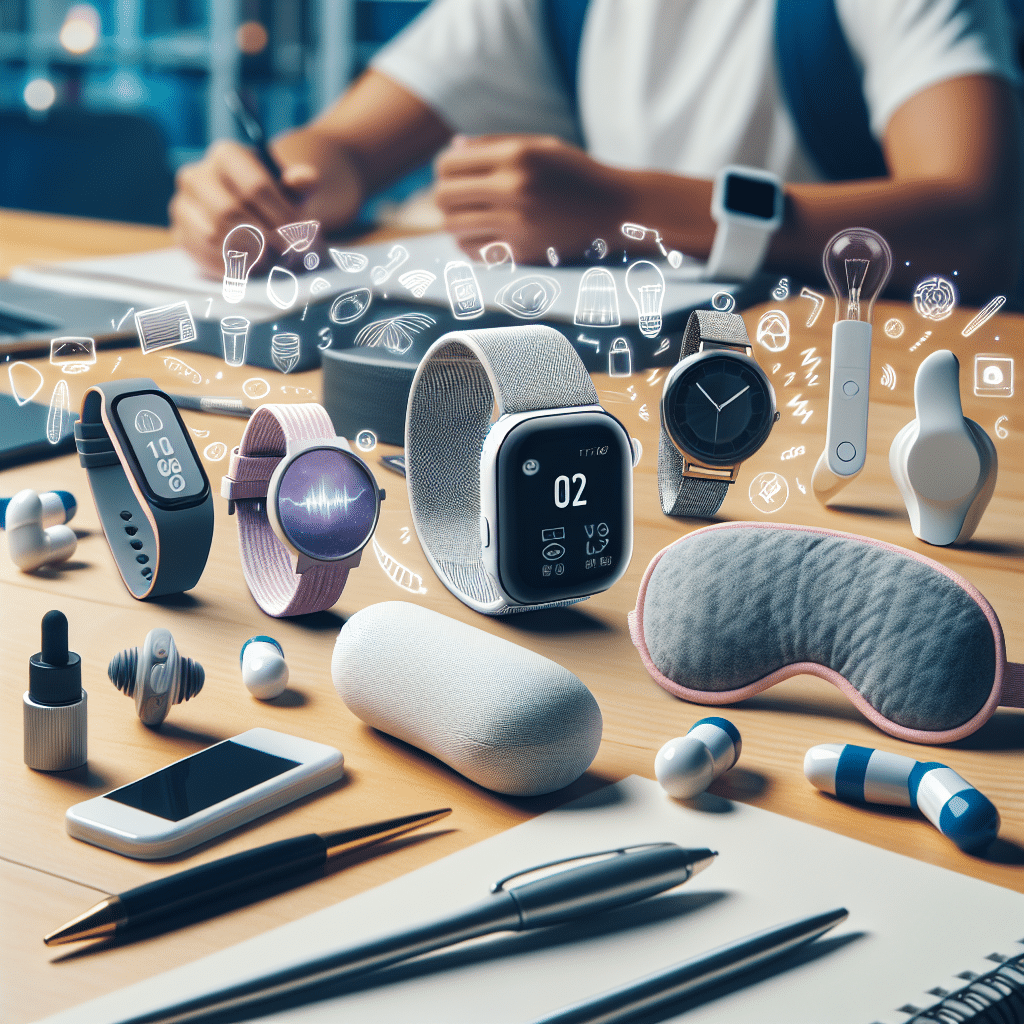The Rise of Wearable Sleep Gadgets in Student Life
Understanding Sleep Importance for Students
Students often juggle a demanding schedule filled with classes, assignments, and social activities, making quality sleep vital for their mental and physical well-being. Studies show that lack of sleep can lead to decreased cognitive function, poor academic performance, and impaired physical health. Hence, integrating innovative wearable sleep gadgets into student life can revolutionize how they approach rest.
Smart Sleep Trackers
Wearable sleep trackers like the Fitbit Charge series and WHOOP Band provide deep insights into sleep patterns, durations, and quality. These devices monitor heart rate, movement, and even blood oxygen levels throughout the night. For students, understanding their sleep stages—light, deep, and REM—can help them identify potential disruptions, like late-night study sessions or caffeine consumption.
Using a sleep tracker, students can input their ideal sleep goals into an accompanying app, which generates personalized recommendations. For example, if data shows regular disruptions in deep sleep, the app might suggest earlier study hours or relaxation techniques before bed.
Sleep Headphones and Earbuds
Noise pollution is a significant sleep disruptor in shared living arrangements typical of student housing. Enter sleep headphones and earbuds designed specifically for comfort during sleep. Brands like Bose and SleepPhones offer headphones that can play calming sounds, white noise, or guided sleep meditations. Such devices often come with soft, comfortable fabrics that conform to the ears, ensuring no discomfort while resting.
Moreover, many sleep earbuds come with active noise cancellation features. This aids students who live in lively dorms or busy city environments by blocking out unwelcome sounds. With Bluetooth connectivity options, students can also connect these devices to their favorite meditation apps, making sleep more accessible and enjoyable.
Smart Sleep Masks
Another remarkable advancement in wearable sleep technology is the smart sleep mask. Brands like Oura and Dreampad have created masks that not only block out light but also use soft vibrations and sound to promote relaxation. These masks often incorporate features like gentle heat or light therapy, encouraging deeper sleep.
Some masks even integrate sleep tracking technology, providing users with a comprehensive look at how effectively they rest. The data gathered with sleep masks can usually sync with smartphones, allowing students to analyze their sleep data and improve their habits going forward.
Sleep-Inducing Wearables
For students struggling with sleep onset, sleep-inducing wearables, like the Zeo Sleep Manager or the Sleep Number’s SleepIQ, are game-changers. These devices work on the principle of biofeedback, offering real-time data that can help users understand how their body is responding as they wind down for the night.
Incorporating gentle reminders to decrease screen time or suggesting calming breathing exercises, such devices can transform nighttime routines. Students can utilize these actionable insights to develop healthier habits, gradually making it easier to fall asleep when it’s time to recharge.
Smart Pillows
The use of smart pillows in student life can also enhance the quality of sleep. With advanced features like adjustable firmness, built-in speakers, and sleep tracking technologies, pillows from companies like Zephyr and SmartPillow enhance comfort while providing essential data.
Smart pillows often come with integrated apps that can analyze the user’s sleep positions and patterns, offering personalized insights. This analysis can lead to better posture during the night, reducing morning stiffness, which is particularly beneficial for students often on the go.
Light Therapy Wearables
Light therapy solutions cater to students struggling with Seasonal Affective Disorder (SAD) or those who find it hard to wake up during dark winter months. Wearable devices like the Philips Wake-Up Light Alarm Clock or Luminous produce gradual light that mimics a sunrise, gently rousing users from slumber without the jolt of a loud alarm.
Light therapy gadgets can also be worn as glasses or headbands that emit specific wavelengths of light, adjusting the body’s circadian rhythm. Students utilising these devices can improve their mood and energy levels, even with fewer hours of sleep.
Temperature Regulation Wearables
Temperature regulation plays a key role in quality sleep. Innovative products like the ChiliPad or sleepwear infused with phase-change materials enable students to maintain an optimal sleep temperature. These technologies can cool or warm a bed to promote a better sleep experience.
Wearable options extend to sleepwear that adjusts according to body temperature, ensuring a comfortable night’s rest. For students with varied routines, these temperature regulation wearables can offer tremendous relief, making it easier to find the perfect sleep conditions, whether one prefers a cooler or warmer environment.
App Connectivity and Community Engagement
Many wearable sleep gadgets come with robust app ecosystems that offer personalized feedback and recommendations. These apps can connect students with a community of users who share similar sleep goals. This social aspect can provide encouragement and accountability, pushing students to prioritize their sleep health.
User-friendly dashboards can visualize sleep statistics, helping students track their progress over time. Some apps even gamify the sleep experience with rewards for hitting sleep goals, making it easier to develop and maintain healthy sleep habits.
Conclusion
The incorporation of wearable sleep gadgets into student life has the potential to dramatically alter sleep quality and well-being. From smart sleep trackers to innovative sleep masks, these devices provide insights, comfort, and support for students navigating the complexities of academic life. As these technologies continue to evolve, they may well become essential tools in achieving optimal rest and health for today’s busy, sleep-deprived students.
